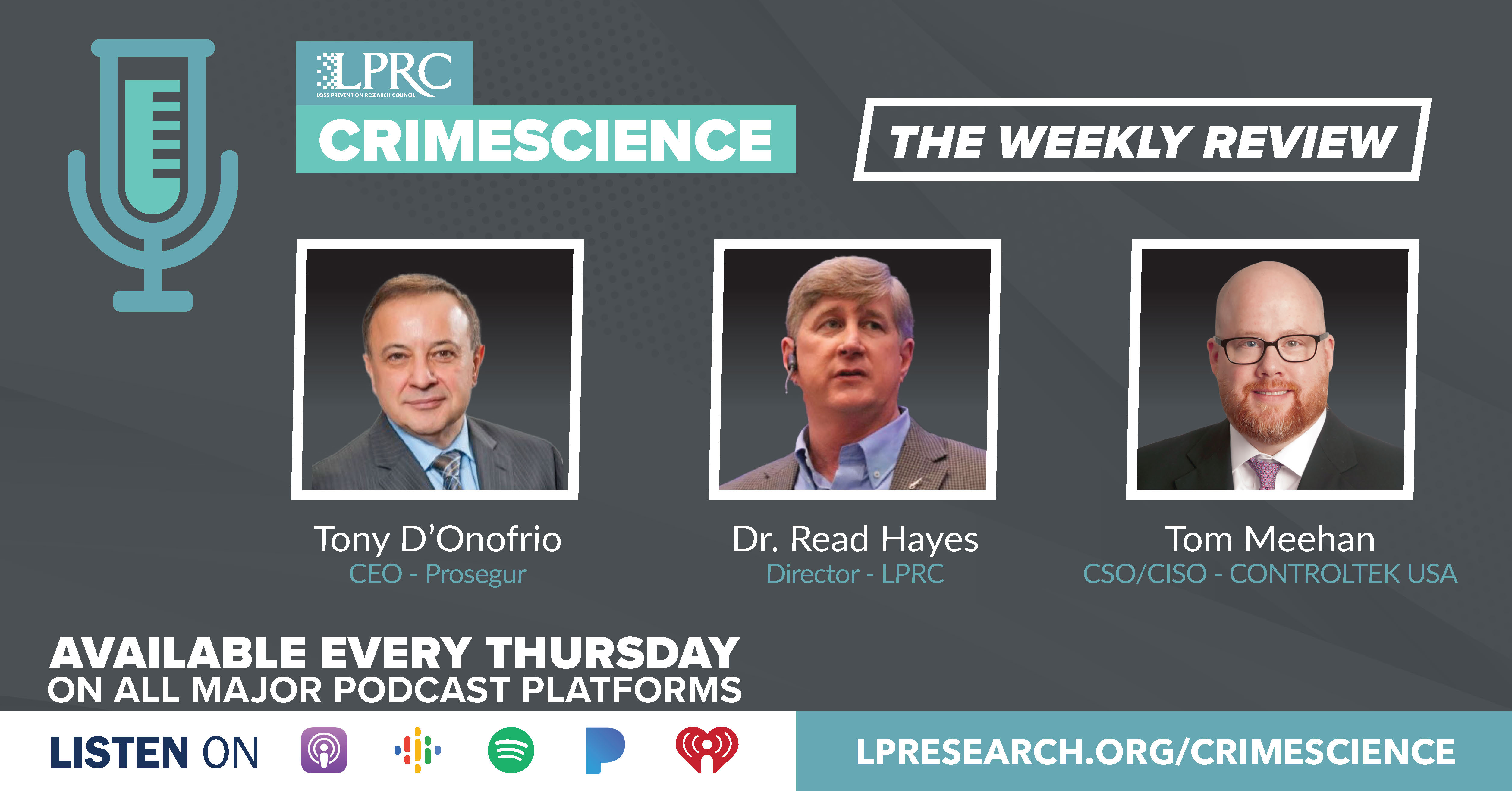Loss Prevention Research Council Weekly Series - Episode 111 - Convenience Stores Research and USA Violence
With Dr. Read Hayes, Tony D'Onofrio, and Tom Meehan

The Convenience Experience Report
https://bluedot.io/library/convenience-experience-report/
From our very good friend and loss prevention industry leader at 7-Eleven, Byron Smith, it’s my pleasure to summarize this week a new report on the convenience stores industry that he shared this week.
Called the “Convenience Experience Report” and published by bluedot.io, this research provides a great summary on the state of this important retail sector.
The top five takeaways from the report are:
- 6 in 10 consumers consider purchasing a meal from a convenience store when stopping for fast food.
- There’s significant demand for mobile ordering, drive-thru, and curbside pickup. 62% would visit a c-store more often if drivethru or curbside pickup was available.
- To win and retain customer loyalty, gas discounts are imperative. However, right now, there’s a huge gap between consumers who join loyalty programs for gas discounts and loyalty members who actually receive discounted gas.
- Price overwhelming impacts where consumers fill up. Nearly 9 in 10 state that price dictates where they buy gas.
- C-stores and gas stations appear to be losing customers to short lines. 1 in 3 will drive away if there’s a single car ahead of them at the pump. Nearly half will walk out of a c-store if one or two people are in line at the register.
Also interesting from the research, 7 in 10 consumers enter the convenience stores when getting gas. 83% of consumers are concerned with credit card fraud at the pump. The majority of consumers would like to skip swiping or inserting their credit card when paying at the pump.
Digital screens at the pump irritate consumers. 47% find ads irrelevant, 41% said it’s nothing that’s interesting, and 30% find them too loud. Half of consumers look at their phones while pumping gas.
The number one reason consumers would download gas and convenience store apps on their devices is gas discounts. 86% of customers would download an app for discounts. 57% to earn and track loyalty points and interestingly 40% would do it to protect credit card fraud.
The top three things that consumers want on from the digital screens at the pump are 37% convenience store deals, 37% loyalty points and levels, and 30% news and entertainment.
How Happy and Loyal are USA Smartphone Users?
https://www.statista.com/chart/27694/satisfaction-and-brand-loyalty-among-us-smartphone-users/
On a totally different topic, let me switch to Statista and summarize how happy and loyal are we with smartphones in the USA.
In multiple previous articles as have name the smartphone at the third major megatrend that transformed the retail industry. With smartphone the power of retail was transferred to the consumer who can use these mini-computers to instantly switch loyalty to other retailers, even while standing in front of the product inside a store. In other words, while shopping in any store, consumers can instantly check whether product is available cheaper online from Amazon or any other online retailer. With faster shipping, the smartphone is making it easier for consumers to switch to alternative products.
With that in mind, which smartphone are we happiest and most loyal to? The data is from Statista. Number one is Apple 92% of consumers satisfied and a loyalty score of 13%. Number 2 is Samsung with 91% satisfied and a 10% loyalty score and number 3 is Google with 85% of consumers satisfied, but with a negative 36% loyalty score.
Interesting from this research how close Apple and Samsung are in their stores. I expected Apple to have higher numbers. Expect both companies to keep fighting with new innovations to increase their scores.
Global 5G Adoption to Hit One Billion in 2022
https://www.statista.com/chart/9604/5g-subscription-forecast/
Speaking of smartphone, let me also update you this week on where we are in the adoption of 5G. New research published again by Statista provides the clues. In 2022, global 5G adoption will cover over 1 billion subscriptions.
A substantial majority of the penetration of the volume of 5G subscriptions is in Asia-Pacific for 2022, followed by North America, and Europe. Would expect that India and China with their large populations are major contributors to the growth in Asia.
By 2027, over 4 billion subscriptions will be in place with again Asia Pacific leading the way. I continue to follow innovation in China and there is a lot of focus on leveraging smartphones to increased applications that include video, AR, VR, and other Metaverse applications.
Again, a good place to learn more of how 5G will play in retail will be at the LPRC.
Summer 2022 Weekend Shooting Analysis
http://d-ddaily.com/archivesdaily/D&DDaily07-11-22.htm
Finally, In a recent podcast that Terry Sullivan completed for the Loss Prevention Magazine, he cited safety as an important concern for the retail industry. Fully agree with him and data published by D&D Daily this week, highlights the problem.
Starting Memorial Day Weekend, the D&D Daily began compiling and analyzing data from 15 major U.S. cities to get a snapshot of summer gun violence.
In the past 7 weekends since, these 15 major cities experienced 860 shootings with 276 people killed and 896 people injured.
Just this past weekend, from July 8th through July 10th, there were 96 shootings recorded in these same cities, resulting in 26 deaths and 91 injuries.
Very disturbing news and would urge all listeners to stay engaged with LPRC to work together to address this violence, especially in the retail sector.
LPRC Supply Chain Summit is Coming Up in Philly! 5G is Growing Globally and Fast! In this week’s episode, our co-hosts discuss a look at common consumer trends at gas stations, what to do if a nuclear bomb hits, the use of smartphones by consumers in retail spaces, callback phishing scams are on the rise, and a new variant raising COVID numbers.
















